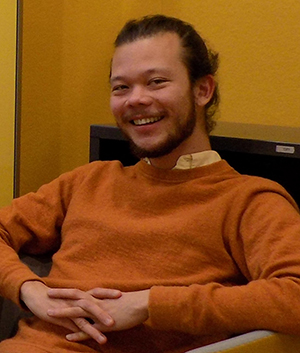Postdoctoral Fellow Highlight: Chris Jackson
December 11, 2020 - Carlton Caves and Gloria Cordova

Chris Jackson, CQuIC Postdoctoral Fellow, joined CQuIC in April 2017 and is leaving at the end of the calendar year to become a postdoc at Sandia Livermore. Chris will join the group of Mohan Sarovar and Sandia National Laboratories, California. Chris’s research at CQuIC focused on how to measure generalized coherent states and how to understand the space of coherent states in terms of the functions that live on that space. This focus has now broadened to a vision that all of physics happens on phase spaces (technically, symmetric spaces), which generally are curved, and that what needs to be understood is the quantum trinity, states, measurements, and dynamics, on these curved phase spaces. Before the pandemic sent everyone home, Chris was a favorite of CQuIC PhD students for a willingness always to discuss their research---think of all those afternoon discussions before the pandemic in CQuIC’s sunset room---especially if the student professed an interest in a Lie- group-theoretic perspective.
When asked his experiences at CQuIC and how they enriched his perspectives, Chris said, “As far as my partnerships and collaborations, I shared a project with Raf and with Pablo (CQuIC postdocs). My technical identity in both of these projects has to do with these fancy spaces called symmetric spaces and their relationship to what are called generalized coherent states (GCSs.) I definitely think it’s accurate to identify me as someone who spends their time wandering through fancy spaces. ;)”
“I would never have become proficient in this technique if I hadn’t worked with CQuIC grads Ninnat Dangniam (PhD student of Caves) and Ezad Shojaee (PhD student of Deutsch ). Pablo (Pablo Poggi, fellow FRHTP postdoc) and I wandered around these symmetric spaces in the context of time-optimal quantum control. There we have shown that there are control problems which can be understood in a way analogous to a subtle effect traveling East on our Earth has on a pendulum. This analogy is strong enough that it has provided solutions to previously unsolved control problems which we think are particularly illuminating. Sayonee (Sayonee Ray, fellow postdoc) also pointed out to me that these symmetric spaces have been appreciated by an influential theorist, Shinsei Ryu, in the context of superconductivity.”
We wish Chris the best in his future wanderings through fancy spaces.
